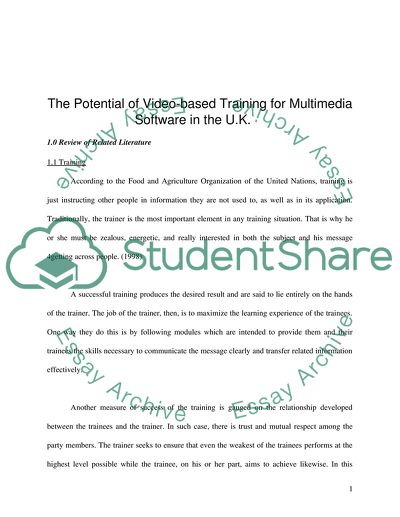Cite this document
(The Potential of Video-based Training for Multimedia Software in the Literature review, n.d.)
The Potential of Video-based Training for Multimedia Software in the Literature review. Retrieved from https://studentshare.org/information-technology/1711268-the-potential-of-video-based-training-for-multimedia-software-in-the-uk
The Potential of Video-based Training for Multimedia Software in the Literature review. Retrieved from https://studentshare.org/information-technology/1711268-the-potential-of-video-based-training-for-multimedia-software-in-the-uk
(The Potential of Video-Based Training for Multimedia Software in the Literature Review)
The Potential of Video-Based Training for Multimedia Software in the Literature Review. https://studentshare.org/information-technology/1711268-the-potential-of-video-based-training-for-multimedia-software-in-the-uk.
The Potential of Video-Based Training for Multimedia Software in the Literature Review. https://studentshare.org/information-technology/1711268-the-potential-of-video-based-training-for-multimedia-software-in-the-uk.
“The Potential of Video-Based Training for Multimedia Software in the Literature Review”, n.d. https://studentshare.org/information-technology/1711268-the-potential-of-video-based-training-for-multimedia-software-in-the-uk.


